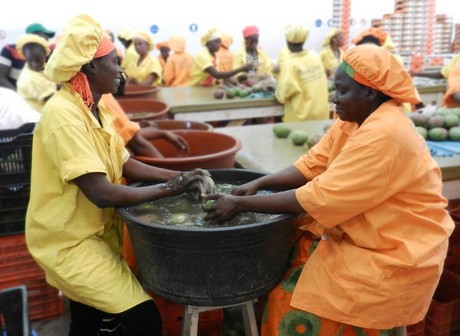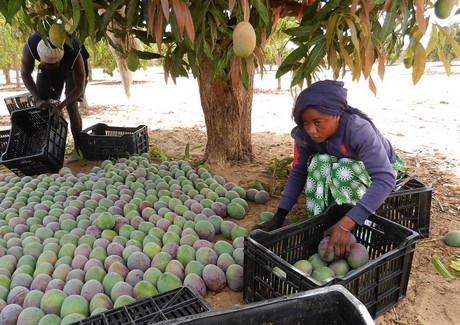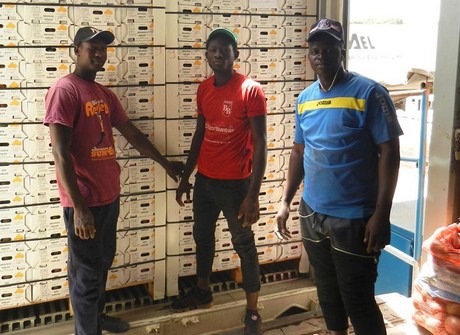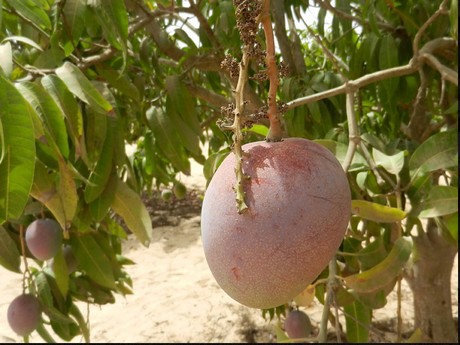Biotropic buyer David Buitenhuis recently visited Senegal for the first time. He visited the Buur Sine cooperative that supplies its organic mangoes to BioTropic. In July, the harvest season for these popular fruits starts and David had the opportunity to follow the process of value creation in the country from the harvest to the export phase.

During the preparation / image: BioTropic
First, there was a visit to the packing station, which is situated not far from Dakar. There, Buitenhuis witnessed how freshly harvested mangoes were unloaded. "On the very day of the harvest, the mangoes are delivered fresh from the field to the packing station to be processed there for export. This is really an optimal situation and it is far from commonplace," notes David.

Harvesting in the plantation / image: BioTropic
The next day there was a visit to two mango orchards of the cooperative. At some point, the roads are no longer tarred, making the ride somewhat more adventurous as it winds across a country full of very dusty areas.
The mango trees grow in the valleys of Niayes, a larger wetland in the otherwise rather arid Senegal. To reduce erosion, many fields are surrounded by hedges. The trees are scattered amidst a surprisingly barren landscape. "I actually expected a more green environment. At the moment it is of course the dry season; regular rains will start returning from about mid-August onwards," says David. Mango trees are however frugal. Their long roots dig deep into the ground.

Packaged mangoes for export / image: BioTropic
Elaborate harvesting process
The fruits are harvested with a blade on a long stick. Immediately after picking, the long stems on the fruit are cut off. The harvest workers are trained not to come in contact with the sticky, slightly corrosive juice that flows abundantly where the fruit was cut.

Fresh mangoes, ready for the harvest / image: BioTropic
The small farmers exclusively cultivate the Kent variety for the foreign trade. The medium-sized fruits are low in fiber and they are very aromatic. "Compared to other kinds of fruits, Senegalese mangoes have a relatively short transport route from the tree to Duisburg. That means they can preserve their intense aroma," explains David.

In the packing station / image: BioTropic
Quality assurance & traceability
After collection, the mangoes are transported to the packing station, where they are washed, sorted and packed. "Seasonally we have a total of 120 employees, and some 75 mango farmers deliver their products to us," says Amacodou Diouf, who is the one showing David the process.
During the harvest season, many students work at Buur Sine to improve their income during the semester break. During his tour of the pack stations, David for instance met Fatou, who studies Law during the rest of the year. Fallou, on the other hand, is the main person responsible for quality assurance during the harvest. And there is Tschurro, she pays attention in the packing station to the fact that everything has its order and controls the fruit qualities and ensures the traceability of the fruits.
For more information: www.biotropic.com
